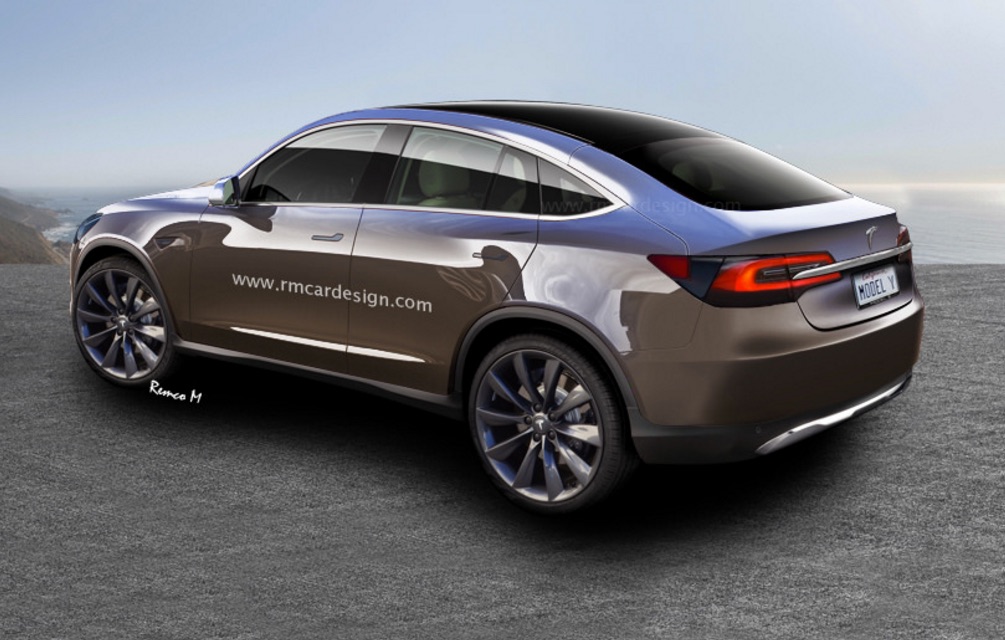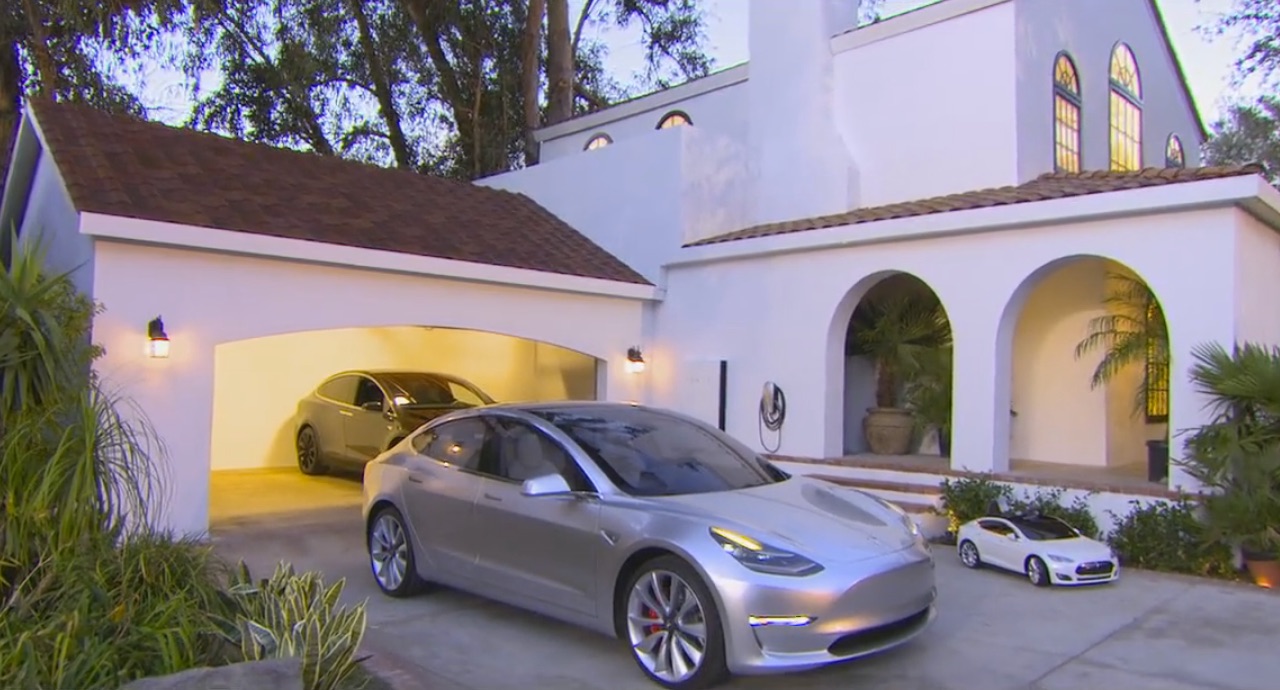News
What Tesla has in store for 2017: Model 3, Model Y, Solar Roof and more
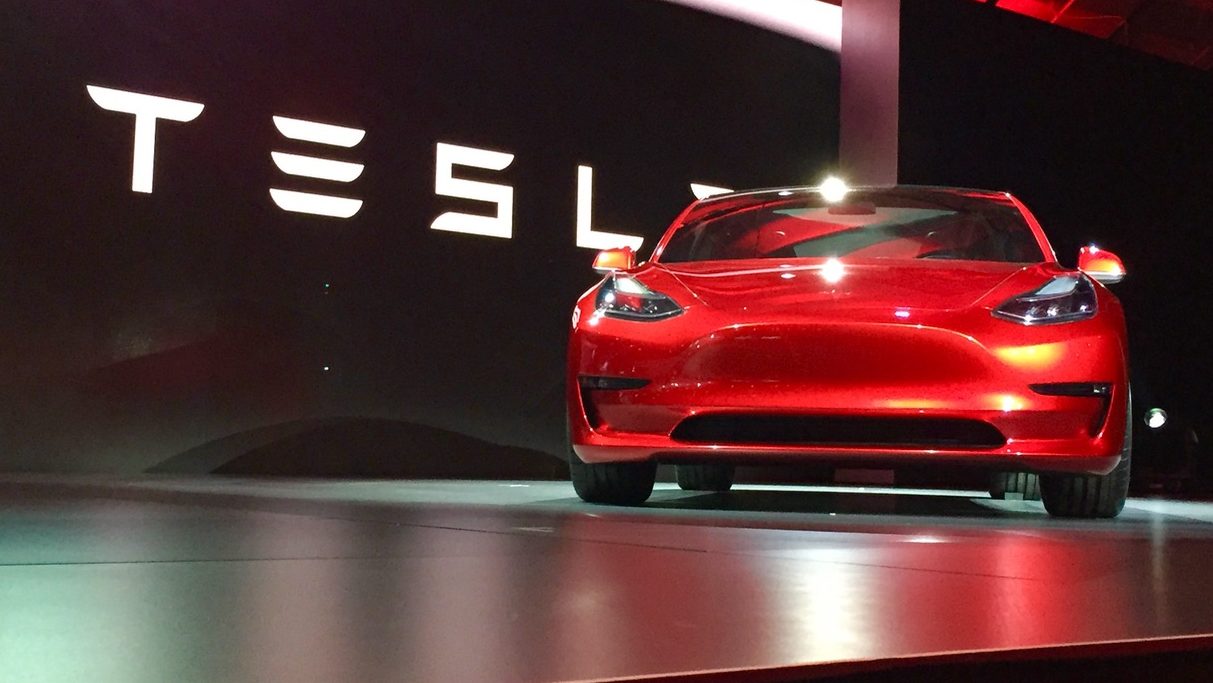
Tesla CEO Elon Musk revealed his vision of the future through the company’s Master Plan Part Deux on July 20, 2016. Filled with predictions about his complex and detailed plan to marry self-driving electric vehicles covering all segments, with solar rooftops and integrated battery storage units, 2017 should be the year when many of them begin to come into focus in a way the public can visualize.
Tesla Model 3 Deliveries
Arguably the most anticipated product on Tesla’s roadmap is its affordable mass market Model 3 mid-size sedan which will see first deliveries take place at the end of 2017. The car has been in “pencils down mode” since summer, meaning the final design has been locked in and the process of getting it ready for production has begun. Elon has hinted that plans call for a volume production date that would begin sometime near the summer of 2017.

Silver Model 3 seen at Tesla’s employee-only Q3 celebration party in San Jose, CA
Goals should always exceed one’s grasp and Musk recognizes that starting volume production on Model 3 by the end of July is going to be next to impossible. He was chastened a bit by the roll out of the Model X, which began in September, 2015. A number of production glitches delayed full production of that car until well into the second quarter of 2016.
That experience tempered Elon’s irrepressible optimism with a dose of real world experience. Even assuming production did begin next summer, it would result in relatively few cars being produced. Those would get into the hands of customers living near the factory in Fremont, California so that any post-production issues can be addressed quickly and efficiently. The lessons learned would then be used to improve the quality of the cars to come.
Machines That Builds Machines, Come to Life
A main area of focus for Musk and Tesla’s production arm is devising ways to reap significant benefits from a total rethinking of the manufacturing process by “building the machine that builds the machine”. Having recently acquired a leading engineering firm in Germany focused on building advanced automation tools, Tesla believes that a properly designed factory could operate at 5 to 10 times the speed of today’s production facilities.
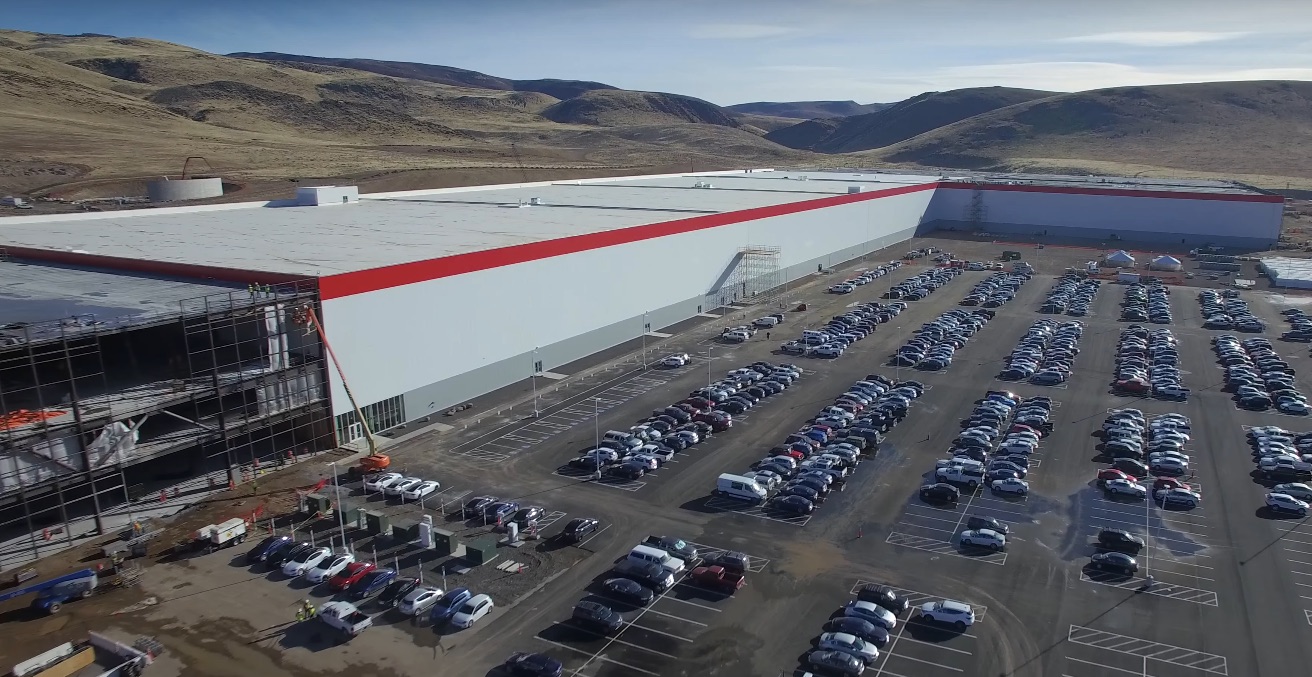
Drone video of Tesla’s Gigafactory shows the battery factory more than doubling in size
“Tesla engineering has transitioned to focus heavily on designing the machine that makes the machine — turning the factory itself into a product. A first principles physics analysis of automotive production suggests that somewhere between a 5 to 10 fold improvement is achievable by version 3 on a roughly 2 year iteration cycle.”, said Musk at the Tesla Gigafactory Grand Opening celebration.
Plans to nearly double the size of Tesla’s Fremont, Calif. factory were recently approved by the city. Tesla plans to build as many as 500,000 cars a year, most of them Model 3s, by the end of 2018.
Tesla Model Y Compact SUV and Tesla Pickup Truck Unveiling
An electric compact SUV based on the Model 3 chassis, dubbed Model Y, will round out Tesla’s S-E-X-Y range of vehicles. That, along with a Tesla pickup and a Tesla ‘minibus’, will fulfill the major automotive segments the Silicon Valley automaker and energy company aims to cover with its upcoming fleet of electric cars. Expect prototypes to be unveiled sometime in 2017
“In addition to consumer vehicles, there are two other types of electric vehicle needed: heavy-duty trucks and high passenger-density urban transport. Both are in the early stages of development at Tesla and should be ready for unveiling next year.”, reads Tesla’s blog post.
Musk also says Tesla is already working on a semi-truck for hauling. Heavy trucks account for about 50% of the emissions from transportation. With Musk’s focus on creating a sustainable society, trucks will need to be big part of the picture. Both the pickup truck and the Tesla Semi are expected to be revealed in concept form during the coming year.Model Y (compact SUV) off Model 3 chassis. Tesla Bus/Minibus/Spacebus off Model X.
— Elon Musk (@elonmusk) July 31, 2016
In addition, Tesla is thinking about creating a self driving minibus that could transport up to 10 passengers, according to Musk’s Master Plan Part Deux. It would be based on the Model X chassis. Passengers could summon the bus to their location and it would deliver them to their destination with little or no walking required — something traditional public transportation vehicles cannot do.
Tesla job openings reveal that developments for future vehicles are already being planned for.
Roll Out of Autopilot 2.0 and Self-Driving Features
2017 is also the year when Tesla’s Enhanced Autopilot should become fully operational. All cars produced after October 19 are equipped with the hardware 2 package of cameras, radar, and advanced ultrasound sensors that will allow them to operate without human input. All that remains to be done is accumulate enough human logged driving miles to flush out the confidence level for the company’s self-driving algorithms.
Tesla has already accumulated more than 1.2 billion miles of driving history and is adding 3 million more miles every day. Elon believes it will require a total of 6 billion miles of driving experience before autonomous driving is reliable enough to convince regulators to allow self-driving cars to be allowed on public roads. He is also aware that approval will vary widely from jurisdiction to jurisdiction, both within the United States and in other countries.
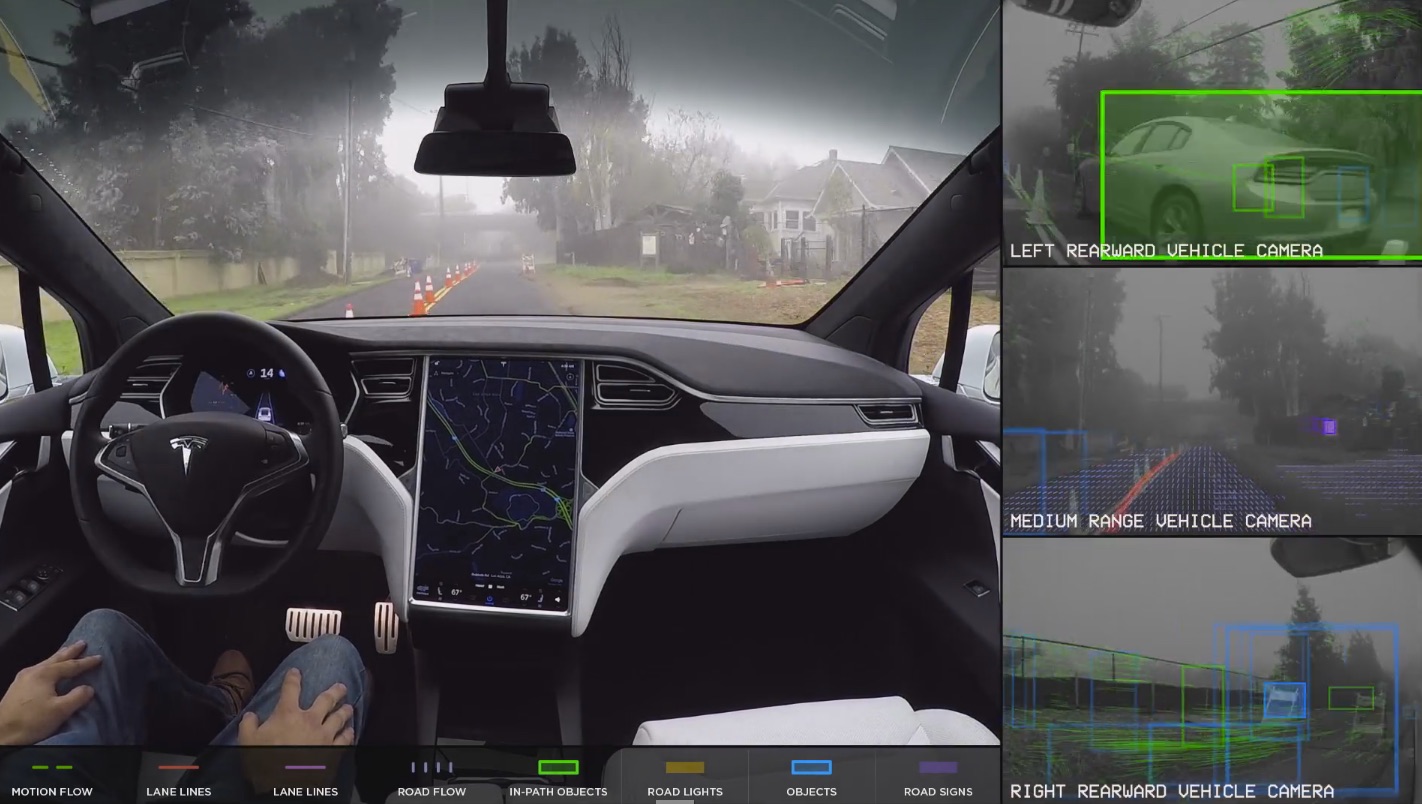
Tesla demonstrates the capabilities of a Full Self-Driving Model X
Musk plans to showcase a fully autonomous trip from Los Angeles to New York by the end of 2017. According to Musk, the cross country journey in a Full Self-Driving Tesla would take place “without the need for a single touch” from a human driver, including recharging the car’s battery.
“Our goal is, we’ll to be able to do a demonstration drive of full autonomy all the way from LA to New York,” According to Musk, the trip would be “from home in LA, to dropping you off in Times Square, and then the car will go park itself.”
Tesla Will Begin Solar Roof Sales
Now that SolarCity has officially become part of Tesla Motors, the Solar Roof products introduced in October will become available next year to customers throughout the US. Tesla is revamping its retail stores to include information about its solar products and the Powerwall 2, its latest residential energy storage product. Musk envisions a seamless, pain-free process that will allow solar customers to order a Solar Roof and all the details are handled completely by Tesla.
Combining energy production with local energy storage will permit more homeowners to reduce their reliance on the local utility company, which will insulate them against future rate hikes. It will also mean fewer carbon emissions from generating electricity, reinforcing Musk’s goal of a sustainable future.
The Solar Roof will be offered in four styles and the anticipated to go on sale during the summer of 2017, starting with the most popular style first. Other styles will become available at the rate of one additional style every three months.

News
Tesla’s most affordable car is coming to the Netherlands
The trim is expected to launch at €36,990, making it the most affordable Model 3 the Dutch market has seen in years.
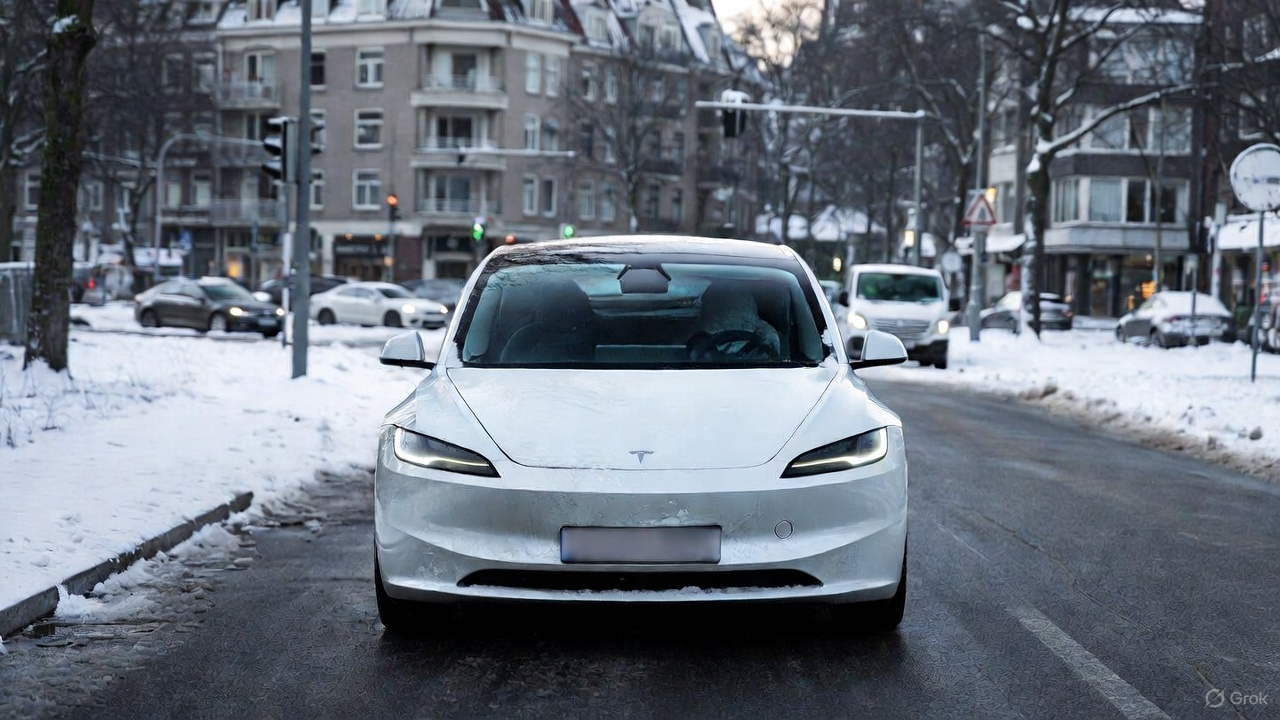
Tesla is preparing to introduce the Model 3 Standard to the Netherlands this December, as per information obtained by AutoWeek. The trim is expected to launch at €36,990, making it the most affordable Model 3 the Dutch market has seen in years.
While Tesla has not formally confirmed the vehicle’s arrival, pricing reportedly comes from a reliable source, the publication noted.
Model 3 Standard lands in NL
The U.S. version of the Model 3 Standard provides a clear preview of what Dutch buyers can expect, such as a no-frills configuration that maintains the recognizable Model 3 look without stripping the car down to a bare interior. The panoramic glass roof is still there, the exterior design is unchanged, and Tesla’s central touchscreen-driven cabin layout stays intact.
Cost reductions come from targeted equipment cuts. The American variant uses fewer speakers, lacks ventilated front seats and heated rear seats, and swaps premium materials for cloth and textile-heavy surfaces. Performance is modest compared with the Premium models, with a 0–100 km/h sprint of about six seconds and an estimated WLTP range near 550 kilometers.
Despite the smaller battery and simpler suspension, the Standard maintains the long-distance capability drivers have come to expect in a Tesla.
Pricing strategy aligns with Dutch EV demand and taxation shifts
At €36,990, the Model 3 Standard fits neatly into Tesla’s ongoing lineup reshuffle. The current Model 3 RWD has crept toward €42,000, creating space for a more competitive entry-level option, and positioning the new Model 3 Standard comfortably below the €39,990 Model Y Standard.
The timing aligns with rising Dutch demand for affordable EVs as subsidies like SEPP fade and tax advantages for electric cars continue to wind down, EVUpdate noted. Buyers seeking a no-frills EV with solid range are then likely to see the new trim as a compelling alternative.
With the U.S. variant long established and the Model Y Standard already available in the Netherlands, the appearance of an entry-level Model 3 in the Dutch configurator seems like a logical next step.
News
Tesla Model Y is still China’s best-selling premium EV through October
The premium-priced SUV outpaced rivals despite a competitive field, while the Model 3 also secured an impressive position.

The Tesla Model Y led China’s top-selling pure electric vehicles in the 200,000–300,000 RMB segment through October 2025, as per Yiche data compiled from China Passenger Car Association (CPCA) figures.
The premium-priced SUV outpaced rivals despite a competitive field, while the Model 3 also secured an impressive position.
The Model Y is still unrivaled
The Model Y’s dominance shines in Yiche’s October report, topping the chart for vehicles priced between 200,000 and 300,000 RMB. With 312,331 units retailed from January through October, the all-electric crossover was China’s best-selling EV in the 200,000–300,000 RMB segment.
The Xiaomi SU7 is a strong challenger at No. 2 with 234,521 units, followed by the Tesla Model 3, which achieved 146,379 retail sales through October. The Model Y’s potentially biggest rival, the Xiaomi YU7, is currently at No. 4 with 80,855 retail units sold.
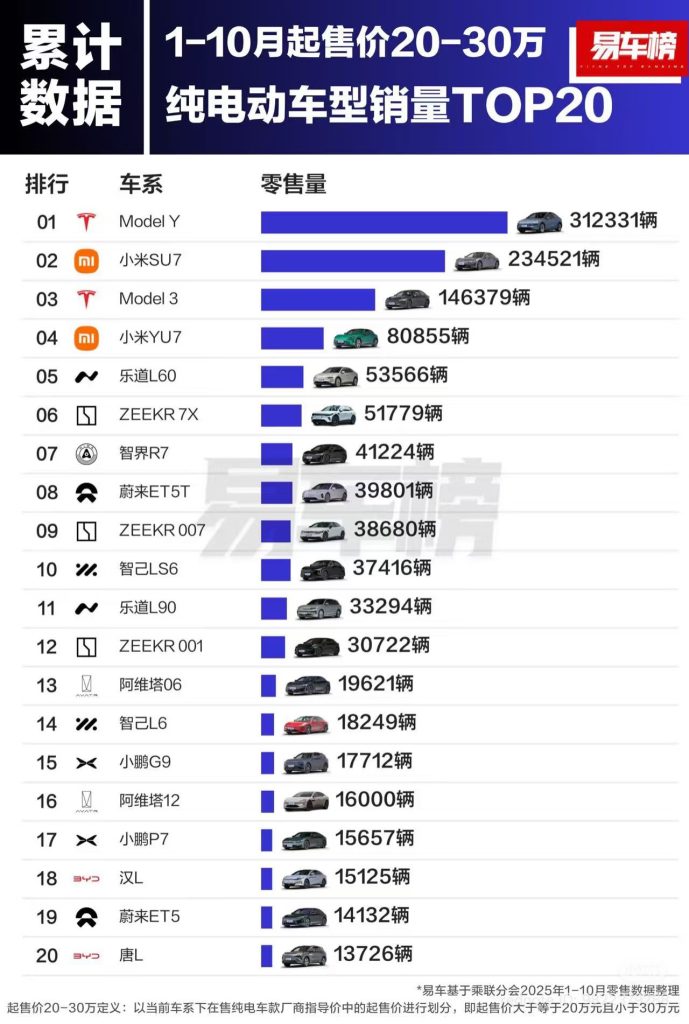
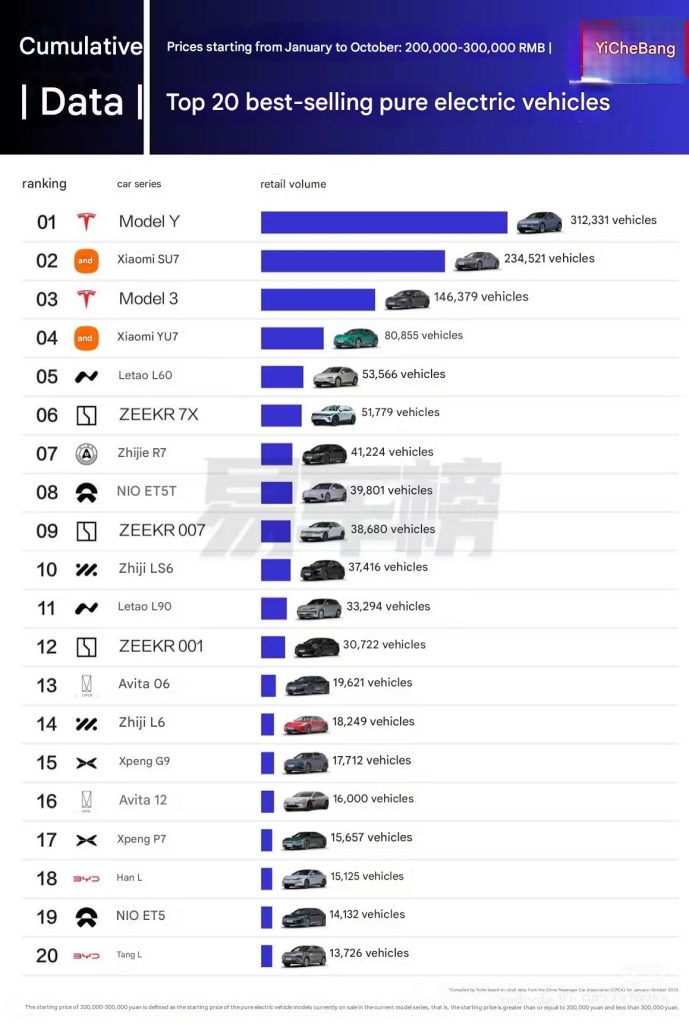
Efficiency kings
The Model 3 and Model Y recently claimed the top two spots in Autohome’s latest real-world energy-consumption test, outperforming a broad field of Chinese-market EVs under identical 120 km/h cruising conditions with 375 kg payload and fixed 24 °C cabin temperature. The Model 3 achieved 20.8 kWh/100 km while the Model Y recorded 21.8 kWh/100 km, reaffirming Tesla’s efficiency lead.
The results drew immediate attention from Xiaomi CEO Lei Jun, who publicly recognized Tesla’s advantage while pledging continued refinement for his brand’s lineup.
“The Xiaomi SU7’s energy consumption performance is also very good; you can take a closer look. The fact that its test results are weaker than Tesla’s is partly due to objective reasons: the Xiaomi SU7 is a C-segment car, larger and with higher specifications, making it heavier and naturally increasing energy consumption. Of course, we will continue to learn from Tesla and further optimize its energy consumption performance!” Lei Jun wrote in a post on Weibo.
Elon Musk
SpaceX’s Starship program is already bouncing back from Booster 18 fiasco
Just over a week since Booster 18 met its untimely end, SpaceX is now busy stacking Booster 19, and at a very rapid pace, too.
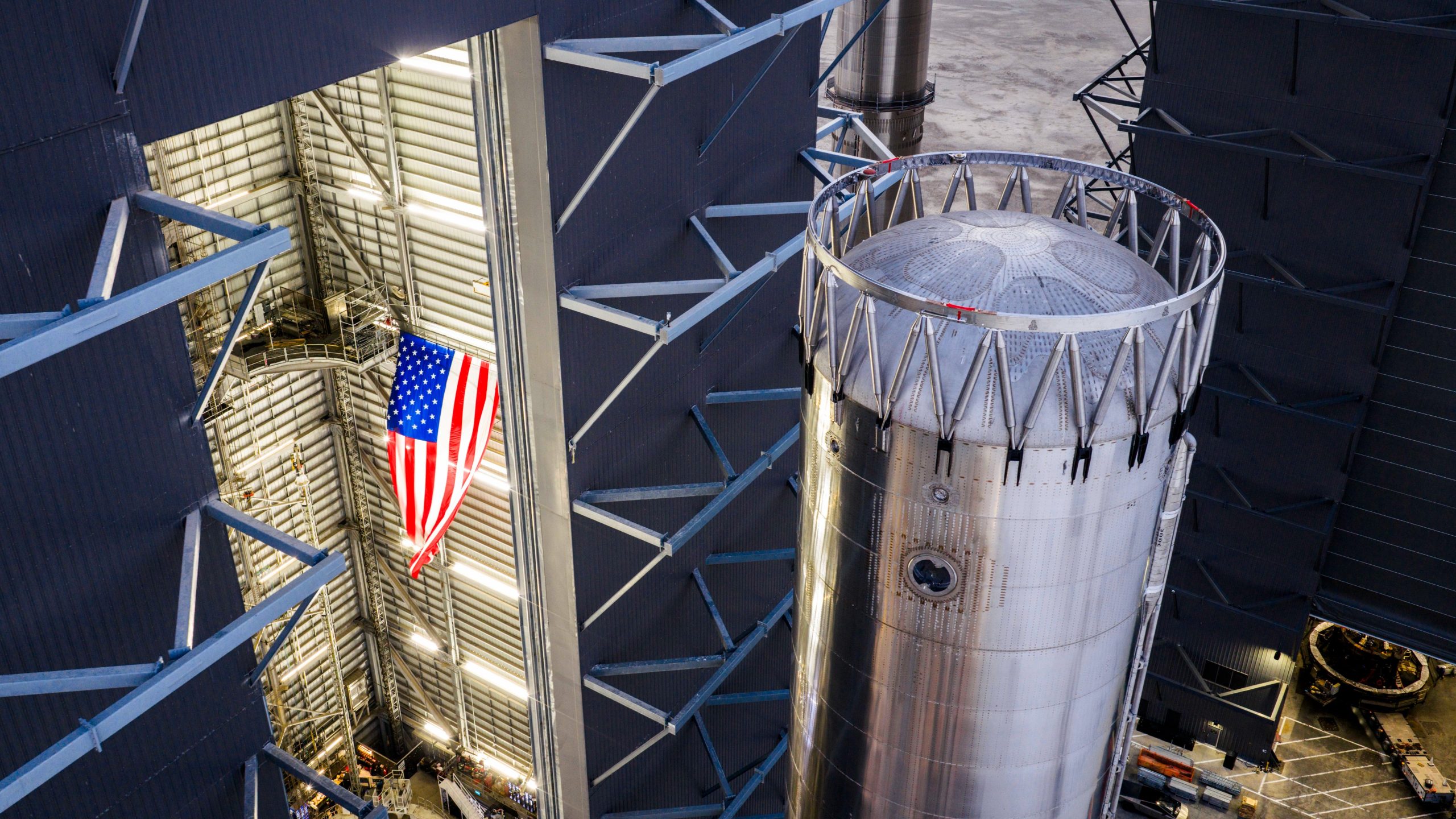
SpaceX is already bouncing back from the fiasco that it experienced during Starship Booster 18’s initial tests earlier this month.
Just over a week since Booster 18 met its untimely end, SpaceX is now busy stacking Booster 19, and at a very rapid pace, too.
Starship V3 Booster 19 is rising
As per Starbase watchers on X, SpaceX rolled out the fourth aft section of Booster 19 to Starbase’s MegaBay this weekend, stacking it to reach 15 rings tall with just a few sections remaining. This marks the fastest booster assembly to date at four sections in five days. This is quite impressive, and it bodes well for SpaceX’s Starship V3 program, which is expected to be a notable step up from the V2 program, which was retired after a flawless Flight 11.
Starship watcher TankWatchers noted the tempo on X, stating, “During the night the A4 section of Booster 19 rolled out to the MegaBay. With 4 sections in just 5 days, this is shaping up to be the fastest booster stack ever.” Fellow Starbase watcher TestFlight echoed the same sentiments. “Booster 19 is now 15 rings tall, with 3 aft sections remaining!” the space enthusiast wrote.
Aggressive targets despite Booster 18 fiasco
SpaceX’s V3 program encountered a speed bump earlier this month when Booster 18, just one day after rolling out into the factory, experienced a major anomaly during gas system pressure testing at SpaceX’s Massey facility in Starbase, Texas. While no propellant was loaded, no engines were installed, and no one was injured in the incident, the unexpected end of Booster 18 sparked speculation that the Starship V3 program could face delays.
Despite the Booster 18 fiasco, however, SpaceX announced that “Starship’s twelfth flight test remains targeted for the first quarter of 2026.” Elon Musk shared a similar timeline on X earlier this year, with the CEO stating that “ V3 is a massive upgrade from the current V2 and should be through production and testing by end of year, with heavy flight activity next year.”
Considering that Booster 19 seems to be moving through its production phases quickly, perhaps SpaceX’s Q1 2026 target for Flight 12 might indeed be more than feasible.

